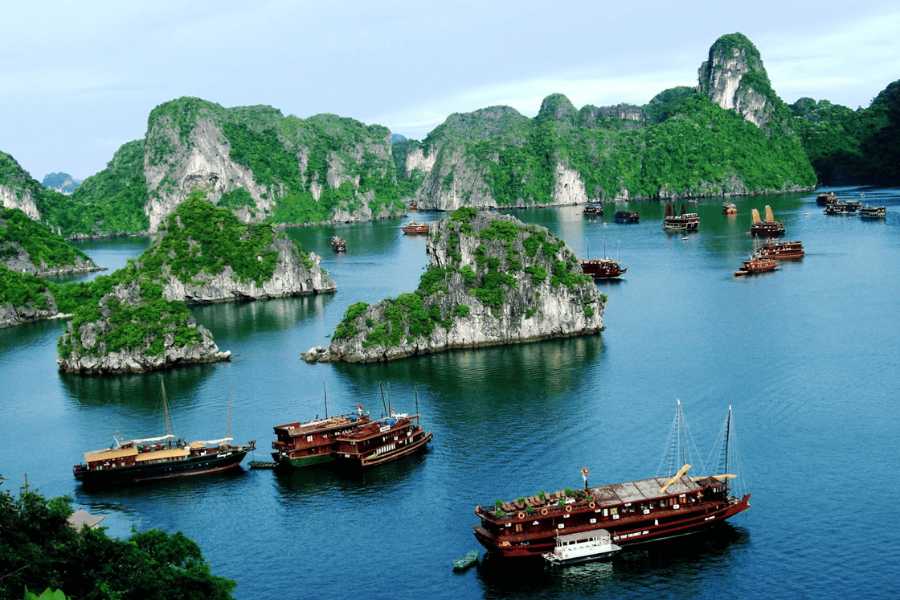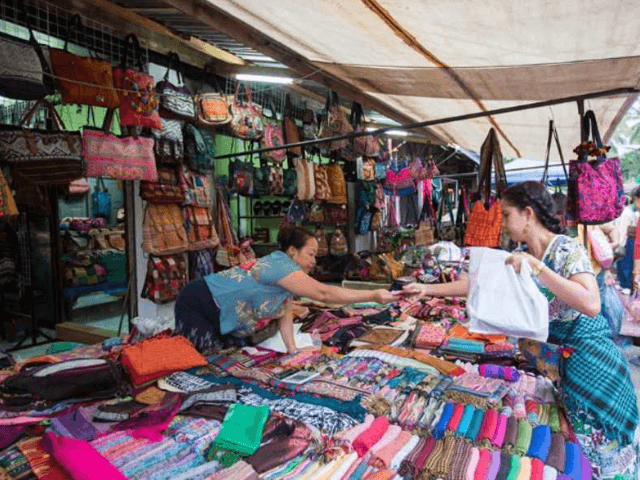A helpful tip if you plan for Vietnam tours with Halong cruise: When is the best time to visit Ha Long Bay? How is Ha Long Bay weather in four seasons?
TABLE OF CONTENTS
1
1. Overview of Ha Long Bay’s Climate
What to Expect Throughout the Year
Seasonal Changes in Temperature and Rainfall
2
2. The Best Time to Visit Ha Long Bay
Peak Season: October to April
Shoulder Season: May to September
Low Season: When to Avoid Crowds and Get Deals
3
3. Ha Long Bay in Different Seasons
Spring (March to May): Ideal Weather and Blossoming Nature
Summer (June to August): Warm Days and Beach Activities
Autumn (September to November): Clear Skies and Cooler Temperatures
Winter (December to February): Crisp Air and Serene Scenery
4
4. Tips for Visiting Ha Long Bay During Each Season
Best Time for Cruising and Outdoor Activities
Rainy Season Tips: How to Enjoy Ha Long Bay Despite Showers
What to Pack Based on the Season
5
5. FAQs About Ha Long Bay Weather
When is the rainy season in Ha Long Bay?
What’s the best month for avoiding crowds?
1. Overview of Ha Long Bay’s Climate
Ha Long Bay has a tropical monsoon climate with seasonal variations in temperature, precipitation, humidity, and sunshine hours. The weather is generally warm and sunny for most of the year except during the wet season from September to December when scattered rain showers are more common.
What to Expect Throughout the Year
- January-March: The sky is often clear with comfortable temperatures ranging from 18°C to 25°C. This dry season sees very little rainfall making it an ideal time to visit for outdoor exploration of the limestone islands.
- April-May: The warm weather persists with daily highs of 25-29°C. Mornings and evenings can be humid but rainfall is still low. Many travelers enjoy visiting during the early spring shoulder season for smaller crowds.
- June-August: Summer is the hottest time in Ha Long Bay with temperatures hovering around 30-33°C and high humidity. Occasional afternoon thundershowers are possible inland but the bay itself does not usually experience much rainfall.
- September-November: Typhoon season brings an increase in rain with afternoon showers and storms. However, many days are partly cloudy and rainfall is often brief. Accommodations and tours tend to be less busy compared to other times of the year.
- December: The rainy season is gradually transitioning with moderate temperatures of 20-25°C and intermittent precipitation. It's still a worthwhile time to visit for a less crowded experience.
Seasonal Changes in Temperature and Rainfall
In summary, the dry season from December to April offers the least chance of rain with ideal temperatures for outdoor sightseeing and activities. May to August sees higher temperatures but also lower rainfall. The wet season from September to November brings more precipitation but it tends to be scattered rather than heavy downpours every day. Overall, Ha Long Bay can be visited year-round with planning factored around the seasonal weather patterns.
2. The Best Time to Visit Ha Long Bay
Peak Season: October to April
The months between October to April see the largest number of visitors to Ha Long Bay. The weather is generally dry with warm temperatures making it ideal for outdoor sightseeing. High season peaks during public holidays from late December to early January and February to April when accommodation prices are highest. Popular activities like cruises tend to book up further in advance.

Shoulder Season: May to September
The shoulder season months offer slightly smaller crowds with occasional rainfall. Daily temperatures are warmer averaging between 25-30°C. Travelers can take advantage of shoulder season deals and often still enjoy sunny weather for exploring Ha Long Bay. Short afternoon rains are possible but tend to be brief.
Low Season: When to Avoid Crowds and Get Deals
Visiting in November has smaller crowds as the peak holiday season winds down. December also sees fewer people before the influx of Vietnamese and international tourists returns in January. September has the most rainfall but offers significant discounts, sometimes up to 50% off regular cruise and hotel rates. Low season is best for budget travelers looking to avoid larger groups. Some attractions or restaurants may also have flexible operating schedules. Advance reservations are still recommended.
3. Ha Long Bay in Different Seasons
Spring (March to May): Ideal Weather and Blossoming Nature
The spring months present mild temperatures averaging 20-25°C along with blooming foliage. It's an excellent time to immerse in lush natural scenery and catch glimpses of wildlife. Light rainfall is rare from March to early May.
- Ideal time for hiking, biking along island trails
- Kayaking through emerging foliage and wildlife viewing
- Cruises offer scenic views of blooming flora
- Angling and swimming conditions are suitable
Summer (June to August): Warm Days and Beach Activities
Summertime sees peak temperatures and humidity throughout Vietnam. However, the ocean breeze keeps Ha Long Bay comfortable for swimming and water activities along the more populous beaches. Early morning kayaking offers respite from the heat.
- Swimming, relaxing on beaches like Titov and Cua Van
- Early morning kayaking before temperatures rise
- Sunset cruises with cooling breezes
- Cultural performances at various resorts
Autumn (September to November): Clear Skies and Cooler Temperatures
Typhoon season means scattered afternoon downpours but sunny breaks in between. Crisp air, inland greens, and seascapes in vibrant shades await exploration. Accommodation prices are the lowest.
- Crisp air allows for energetic hiking in inland limestone areas
- Cruising among vibrant autumnal foliage and seascapes
- Beachside bbq-ing and bonfires during sunny breaks
- Fishing and scenic bicycle rides along backroads
Winter (December to February): Crisp Air and Serene Scenery
Ha Long Bay takes on a serene, picturesque atmosphere in the dry, cool winter months. Fresh seafood, regional folklore performances, and majestic vistas can be fully appreciated without rainfall or crowds. Local festivals add colorful celebrations.
- Scenic walks along deserted beaches and panoramic viewpoints
- Cooking classes and folklore shows fill rain delays
- Opportunities for night photography of illuminated sceneries
- Cultural exploration of local Ha Long traditions and festivals
4. Tips for Visiting Ha Long Bay During Each Season
Best Time for Cruising and Outdoor Activities
Spring (March-May) and winter (December-February) generally provide stable weather without rain for hiking, kayaking, and swimming. Summer days are excellent for the latter two but cruising may be hot. Autumn offers hit-or-miss conditions and more showers.
Rainy Season Tips: How to Enjoy Ha Long Bay Despite Showers
From September to November, pack an umbrella and change of clothes. Many attractions remain open and tours still operate as downpours tend to be brief. Indoor activities like cooking classes fill rain delays nicely.
What to Pack Based on the Season
- Spring/Autumn: Light layers, sun protection, comfortable shoes for walking trails
- Summer: Swimwear, sunglasses, lightweight breathable fabrics
- Winter: Warm jacket, scarf, gloves - temperatures occasionally drop below 15°C
- Rainy Season: Rain jacket, sandals, electronic devices to enjoy inside attractions
Proper clothing ensures enjoying every aspect of Ha Long Bay regardless of the season. With a little planning around weather patterns, any time of year offers a memorable visit.
5. FAQs About Ha Long Bay Weather
When is the rainy season in Ha Long Bay?
The rainy season runs from September to November when scattered showers are more common due to tropical storms and typhoons. However, many days still see partial sunshine and rainfall tends to be brief. Accommodations remain open year-round.
What’s the best month for avoiding crowds?
November through February has smaller tourist numbers, allowing for a more serene experience of famous sights like Bai Tu Long Bay with fewer large cruise ships. Off-season rates also apply making it worthwhile even with occasional winter showers. Advance reservations are still recommended.










